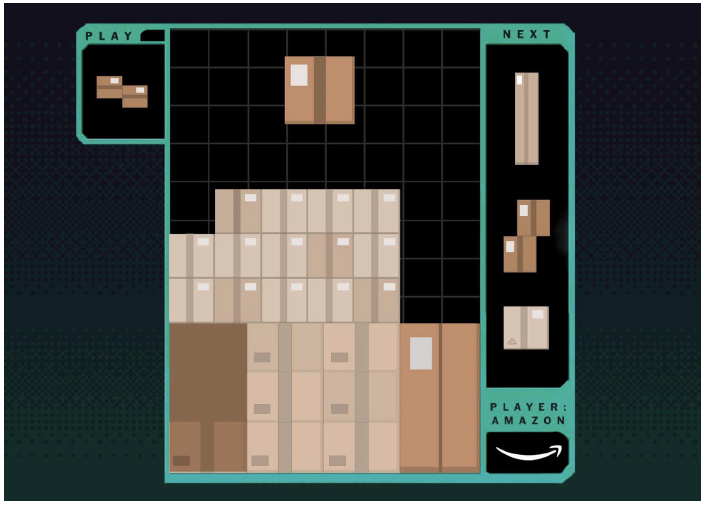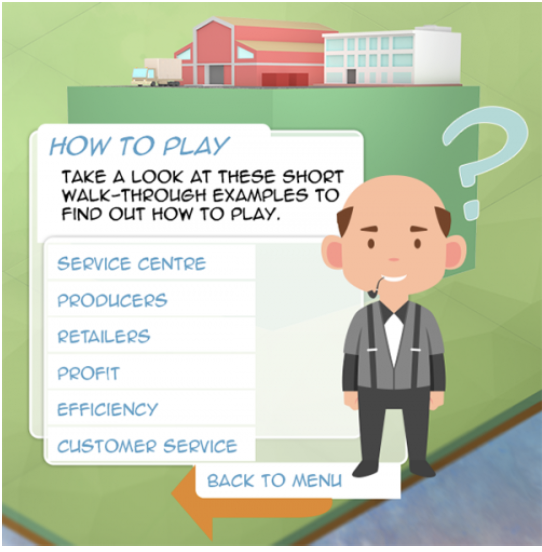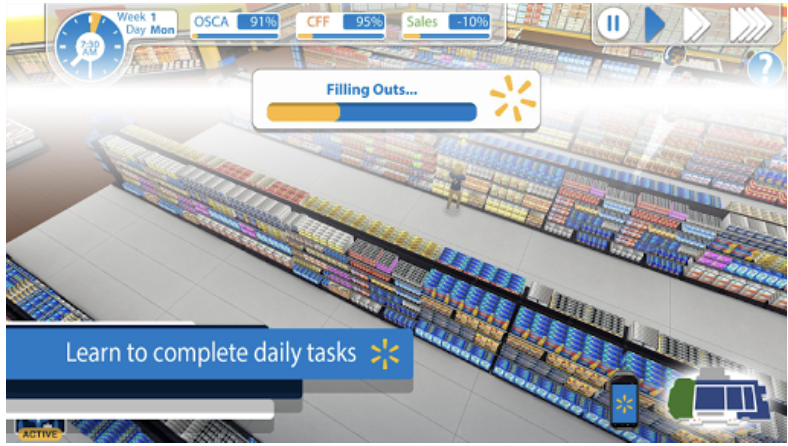
albert Chan
[caption id="attachment_95005" align="aligncenter" width="700"] Source: Coresight Research[/caption]
What is Gamification?
Gamification integrates game mechanics to a task to increase participation and motivation, encouraging learning through mechanisms that stimulate a sense of achievement, of reward and which provide feedback. Badges, levels and leaderboards are examples of elements borrowed from games that bolster user engagement when used in training.
Why is Gamification Important?
Gamification is becoming an increasingly popular business tool across industries. Organizations are using gamification techniques for everything from staff induction to driving culture change.
Gamification offers various benefits:
Source: Coresight Research[/caption]
What is Gamification?
Gamification integrates game mechanics to a task to increase participation and motivation, encouraging learning through mechanisms that stimulate a sense of achievement, of reward and which provide feedback. Badges, levels and leaderboards are examples of elements borrowed from games that bolster user engagement when used in training.
Why is Gamification Important?
Gamification is becoming an increasingly popular business tool across industries. Organizations are using gamification techniques for everything from staff induction to driving culture change.
Gamification offers various benefits:
 Amazon’s gamification program
Amazon’s gamification program
Source: Amazon[/caption] Through gamification programs, Amazon is trying to make working in its fulfilment centers more stimulating. According to some Amazon workers, games make their jobs more engaging and fun. In 2015 supply chain logistics company Brambles introduced gamification in its Supply Chain Academy digital learning hub, to increase internal awareness of what the company does. The academy includes a standalone game called Ship It, which Brambles created in collaboration with tech company LEO Learning. Brambles’ Ship It game for learning supply chain concepts
Brambles’ Ship It game for learning supply chain concepts
Source: Brambles[/caption] Since October 2018, Walmart has been using Spark City, a simulation-style mobile app training game, to train store associates for a variety of potential real-life situations. The app puts the game player in charge of the dry goods department in a Walmart store, where they face a variety of challenges typical to what a department manager would tackle daily. As players solve challenges, they advance to higher levels. Within two weeks from launch, the app had around 60,000 downloads, according to Walmart. [caption id="attachment_95761" align="aligncenter" width="500"] Walmart’s Spark City game
Walmart’s Spark City game
Source: Walmart[/caption] Key Elements of Integrating Gamification into Training There are few elements that gamification should fulfil to be an effective training tool:
 Source: Coresight Research[/caption]
What is Gamification?
Gamification integrates game mechanics to a task to increase participation and motivation, encouraging learning through mechanisms that stimulate a sense of achievement, of reward and which provide feedback. Badges, levels and leaderboards are examples of elements borrowed from games that bolster user engagement when used in training.
Why is Gamification Important?
Gamification is becoming an increasingly popular business tool across industries. Organizations are using gamification techniques for everything from staff induction to driving culture change.
Gamification offers various benefits:
Source: Coresight Research[/caption]
What is Gamification?
Gamification integrates game mechanics to a task to increase participation and motivation, encouraging learning through mechanisms that stimulate a sense of achievement, of reward and which provide feedback. Badges, levels and leaderboards are examples of elements borrowed from games that bolster user engagement when used in training.
Why is Gamification Important?
Gamification is becoming an increasingly popular business tool across industries. Organizations are using gamification techniques for everything from staff induction to driving culture change.
Gamification offers various benefits:
- Companies can use gamification to improve workforce motivation in warehouse operations – in particular order picking.
- Gamification can train people to make decisions beneficial for the group as a whole, not just their own interest.
- Companies can motivate participants with virtual or tangible rewards, teams may forge social connections and individuals can see how they compare to their colleagues in completing training.
 Amazon’s gamification program
Amazon’s gamification programSource: Amazon[/caption] Through gamification programs, Amazon is trying to make working in its fulfilment centers more stimulating. According to some Amazon workers, games make their jobs more engaging and fun. In 2015 supply chain logistics company Brambles introduced gamification in its Supply Chain Academy digital learning hub, to increase internal awareness of what the company does. The academy includes a standalone game called Ship It, which Brambles created in collaboration with tech company LEO Learning.
- In the game, players must master four levels in which they plan optimal routes for pick-ups and deliveries from suppliers, distributors and retailers, while considering variables such as time, customer priorities, stock replenishment and truck capacity.
- During the training, employees can simulate corrections if customer satisfaction drops or profits fall.
- Players are rewarded with points for positive behaviors, are shown on a leader board.
 Brambles’ Ship It game for learning supply chain concepts
Brambles’ Ship It game for learning supply chain conceptsSource: Brambles[/caption] Since October 2018, Walmart has been using Spark City, a simulation-style mobile app training game, to train store associates for a variety of potential real-life situations. The app puts the game player in charge of the dry goods department in a Walmart store, where they face a variety of challenges typical to what a department manager would tackle daily. As players solve challenges, they advance to higher levels. Within two weeks from launch, the app had around 60,000 downloads, according to Walmart. [caption id="attachment_95761" align="aligncenter" width="500"]
 Walmart’s Spark City game
Walmart’s Spark City gameSource: Walmart[/caption] Key Elements of Integrating Gamification into Training There are few elements that gamification should fulfil to be an effective training tool:
- Real-time feedback: Game participants must know if they are on the right track and if not, understand why.
- Definition of rules and objectives: Game participants must understand what is expected of them – and how to achieve it.
- Challenges and rewards: Game players should feel challenged, and be rewarded.
- Good planning and design: A gamification strategy has to be well thought out, robust and practical.